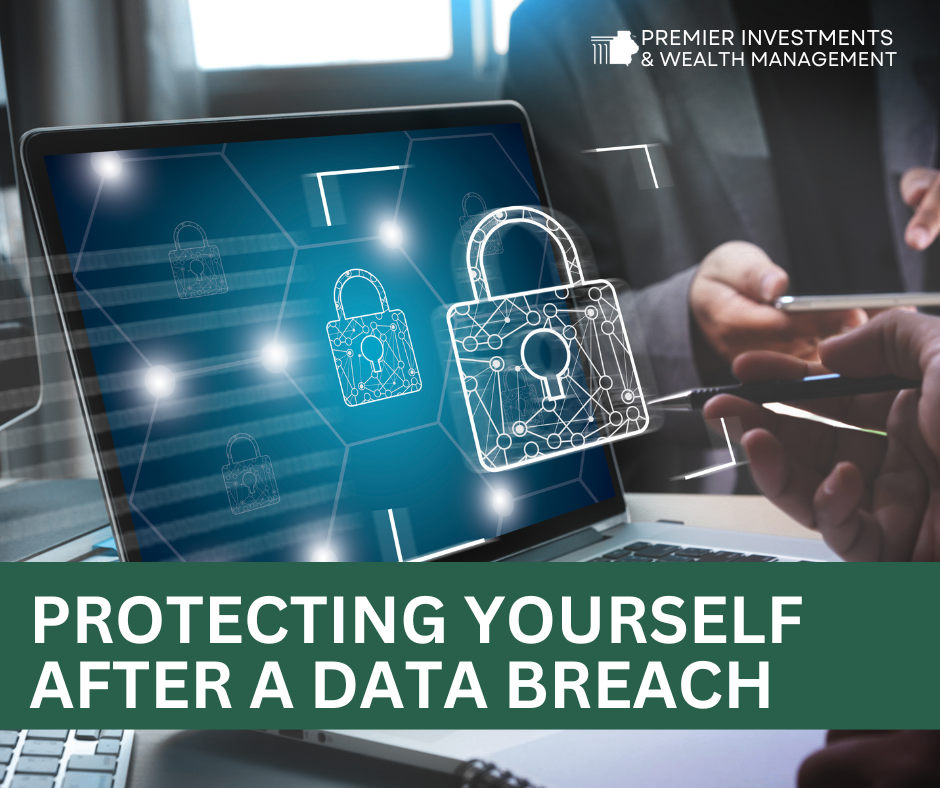5 Steps Investors Should Take After a Data Breach to Protect Their Identity

28 Aug 2024
In today’s digital age, data breaches are becoming an increasingly common threat. As investors, protecting your financial information and personal identity is paramount. According to a report by the Identity Theft Resource Center (ITRC), the number of data breach victims surpassed 1 billion in the first half of 2024 – a 409% increase from the same time period last year! These breaches can lead to severe financial losses, identity theft, and long-term credit damage if not promptly addressed.
Here are five steps every investor should take after a data breach to safeguard their identity:
1. Change Your Passwords Immediately
The first and most crucial step after a data breach is to change your passwords for any affected accounts, and any additional accounts that use the same password. Use strong, unique passwords for each account to reduce the risk of unauthorized access.
A study by Verizon found that 81% of hacking-related breaches were due to weak or stolen passwords. Use a combination of letters, numbers, and special characters, and avoid using the same password across multiple accounts.
Tip: Consider using a password manager to generate and store complex passwords securely.
2. Enable Two-Factor Authentication (2FA)
Two-factor authentication adds an extra layer of security by requiring not just a password but also a second form of verification, such as a code sent to your phone. This means that even if a hacker gets hold of your password, they still can’t access your account without the second factor.
Data Insight: According to Microsoft, enabling 2FA can block up to 99.9% of automated cyber-attacks.
3. Monitor Your Accounts Closely
After a breach, keep a close eye on your financial accounts, including your bank accounts, credit cards, and investment accounts. Look for any unusual transactions or activity. Setting up alerts for any large or unusual transactions can help you catch unauthorized activity early.
Action Step: Regularly review your credit reports from the major bureaus (Experian, TransUnion, and Equifax) to spot any suspicious activity or unfamiliar accounts.
4. Consider a Credit Freeze or Fraud Alert
A credit freeze is one of the most effective ways to protect yourself from identity theft after a data breach. It prevents creditors from accessing your credit report, making it harder for thieves to open accounts in your name. Alternatively, you can place a fraud alert on your credit file, which warns creditors to take extra steps to verify your identity before opening any new accounts.
Note: A credit freeze does not affect your credit score but will need to be lifted temporarily if you apply for new credit.
5. Stay Informed and Vigilant
Finally, stay informed about the breach’s details and any additional steps recommended by the affected company. Many companies offer free credit monitoring services for a limited time after a breach, which can be a valuable tool in spotting identity theft early.
Statistics: According to IBM’s Cost of a Data Breach Report 2023, the average time to identify and contain a breach is 277 days, so ongoing vigilance is crucial.
Stay safe, stay vigilant, and remember: protecting your digital identity is just as important as managing your financial investments.
Important Information:
Securities and advisory services offered through LPL Financial, a registered investment advisor, Member FINRA/SIPC.
The opinions voiced in this material are for general information only and are not intended to provide specific advice or recommendations for any individual.
